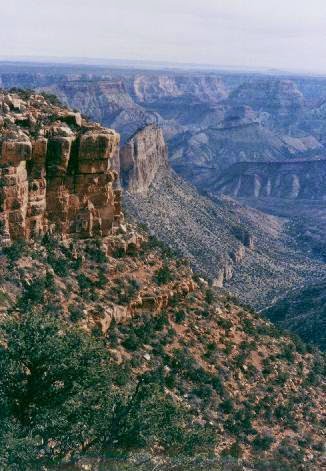.jpg) |
| Photo of the San Rafael Swell, from photographer Vera de Kok, |
Spaces are available on a
spring WV service project in one of the most striking areas of the Colorado Plateau - the San Rafael Swell. Geologically referred to as a massive domal anticline (a convex fold of the earth), the Swell is marked by slot-canyons, valleys, gorges, mesas, desert streams, geologic formations and buttes. Despite being only several hours from Salt Lake City, the San Rafael Swell offers an incredible wilderness experience with a multitude of recreation opportunities and an abundance of solitude.
 |
| Randy Kahn took this 2014 photo contest winning shot of volunteers heading to work on the WV project in the San Rafael Swell last year. |
 |
Endangered Winklers Cactus (Pediocactus winkleri),
Photo by Daniela Roth, USFWS |
The San Rafael Swell offers fascinating geologic formations, a history of ancient peoples, active wildlife and many endemic plants. Evidence of Native American cultures, including the Fremont, Paiute, and Ute, is common throughout the San Rafael Swell in the form of pictograph and petroglyph panels, many of which are accessible. The geology is so uniquely picturesque, it has served as a stand-in for alien worlds in many Hollywood productions, such as
Star Trek and
Galaxy Quest. Unique geological conditions in combination with the arid climate have created microhabitats that support more than 40 rare and endemic plant species. Many of these plants are federally listed as endangered, such as the San Rafael cactus (Pediocactus despainii), Ute ladies-tresses (Spiranthes diluvialis), Barneby's reed-mustard (Schoencrambe barnebyi), and many more.
 |
| Photo by Randy Kahn from last year's WV San Rafael Swell project |
Our project will focus on a non-native plant that is abundant across the western US - the invasive and destructive tamarisk (
tamarix). Tamarisk disrupts the structure and stability of native plant communities and degrades native wildlife habitat in extremely sensitive southwestern riparian areas by outcompeting and replacing native plant species (such as Cottonwoods and Willows), salinizing soils, monopolizing limited water, and increasing the frequency, intensity and effect of fires and floods. Tamarisk, as well as the other woody invasive plant common in the southwest, Russian olive, are nasty non-native plants that need to be removed to help restore wildlife habitat.
We'll camp by our vehicles at a remote site in the Sids Mountain Wilderness Study Area, picked out by our agency partners out of the BLM office in Price, Utah. From there we'll make daily hikes to work sites and explore the vast and wild San Rafael Swell.
Learn more and come join us on a spring service project adventure in this remarkable place! And don't fret too much if the April dates don't line up with your calendar - we have
a fall trip in the San Rafael Swell as well.
 |
| Another great shot from Randy Kahn from last year's project |
See more great photos from the 2014 WV San Rafael service projects over at the WV Photo Gallery.








.jpg)










